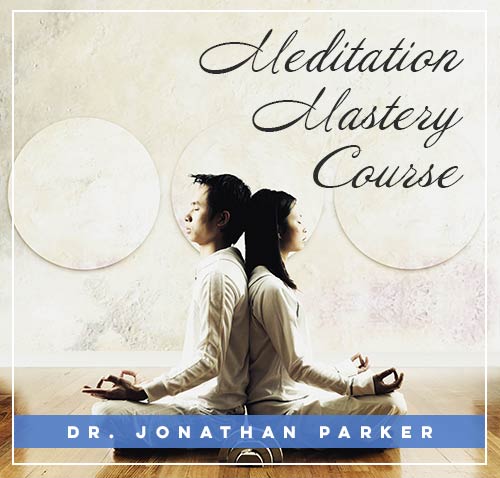Customizing Your Meditation Practice

Looking for more amazing products? Check out our online store and explore our collection here! Happy shopping!
Before diving in, please note: This post is for informational purposes only. If you’d like to know more about how we approach topics, feel free to check out our friendly Disclaimer Page.
Hey there, amazing readers! 
We’re committed to delivering quality posts, and your support (even just sticking around despite the ads) means everything to us. So, bear with us, and thanks for helping us keep the good vibes rolling. Now, on to the fun stuff!
TRANSLATE BUTTON AT THE END OF THE ARTICLE
A Quick Overview
Meditation is a powerful practice that can bring numerous benefits to your mental, emotional, and physical well-being.
However, not all meditation styles work for everyone.
Customizing your meditation practice to suit your individual needs and goals can make a significant difference in the effectiveness and enjoyment of your practice.
In this article, we will delve into the various aspects of customizing your meditation practice to help you maximize its benefits and create a practice that works best for you.
Understanding Meditation Styles
Meditation comes in many forms, each with its own unique techniques and focus.
Understanding the different meditation styles can help you choose the one that resonates with you the most.
Some common meditation styles include:
Mindfulness meditation: focuses on being present in the moment and observing thoughts and sensations without judgment.
Loving-kindness meditation: involves cultivating feelings of compassion and goodwill towards oneself and others.
Transcendental meditation: uses mantras to transcend thought and access a state of deep relaxation.
Guided meditation: involves following the instructions of a teacher or recording to guide you through the meditation practice.
Movement-based meditation: such as yoga or tai chi, combines physical movement with meditative practices.
Benefits of Personalizing Your Practice
Customizing your meditation practice allows you to tailor the experience to your unique preferences and needs.
Some benefits of personalizing your practice include:
Increased motivation and enjoyment: When you customize your meditation practice, you are more likely to stay motivated and engaged in the practice.
Better alignment with your goals: Customizing your practice allows you to focus on specific goals or areas of improvement that are important to you.
Greater effectiveness: By adapting the practice to suit your needs, you can experience greater benefits and outcomes from your meditation practice.
Assessing Your Meditation Goals
Before customizing your meditation practice, it’s essential to assess your goals and intentions for the practice.
Some questions to consider include:
What do you hope to achieve through meditation?
Are you looking to reduce stress, improve focus, cultivate self-awareness, or achieve spiritual growth?
What areas of your life could benefit from meditation the most?
Taking the time to reflect on your goals can help you tailor your practice to align with your intentions and maximize the benefits you receive from meditation.
Tailoring Your Practice to Your Needs
Once you have identified your meditation goals, you can begin to tailor your practice to meet your specific needs.
This may involve:
Adjusting the length and frequency of your meditation sessions to fit your schedule and preferences.
Experimenting with different meditation techniques to find the ones that resonate with you the most.
Incorporating elements such as music, aromatherapy, or visualization to enhance your meditation experience.
Customizing your practice to suit your needs can make your meditation sessions more enjoyable and effective.
Choosing the Right Techniques for You
With many meditation techniques available, it’s essential to choose the ones that work best for you.
Some popular meditation techniques to consider include:
Breath awareness: focusing on your breath as a way to anchor your attention and cultivate mindfulness.
Body scan: systematically scanning your body for sensations to promote relaxation and body awareness.
Visualization: imagining calming scenes or positive outcomes to enhance relaxation and mental focus.
Mantra meditation: repeating a word or phrase to center your mind and promote concentration.
Walking meditation: combining mindfulness with walking to promote physical and mental well-being.
Experiment with different techniques to find the ones that resonate with you and bring you the most benefits.
Incorporating Mindfulness into Your Routine
Mindfulness is a key component of many meditation practices and involves being present in the moment with full awareness.
To incorporate mindfulness into your routine, you can:
Practice mindfulness throughout the day by bringing your attention to the present moment during daily activities.
Use mindfulness meditation techniques such as breath awareness or body scan to cultivate mindfulness during formal meditation sessions.
Bring a sense of curiosity and non-judgment to your experiences, allowing you to observe thoughts and sensations without attachment.
By incorporating mindfulness into your meditation practice, you can enhance your awareness, focus, and overall well-being.
Finding Your Ideal Meditation Environment
Creating a conducive environment for meditation can enhance the quality of your practice and help you stay focused.
Some tips for finding your ideal meditation environment include:
Choose a quiet and clutter-free space where you can sit comfortably without distractions.
Consider playing calming music or using essential oils to create a relaxing atmosphere.
Use cushions or a meditation bench to support proper posture and alignment during meditation.
Ensure that the temperature and lighting in the room are conducive to a peaceful and comfortable meditation experience.
By creating a serene and inviting environment for meditation, you can enhance your practice and deepen your experience.
Adapting Your Practice to Your Schedule
Finding time for meditation can be challenging, especially with a busy schedule.
To adapt your practice to your schedule, consider:
Breaking up your meditation sessions into shorter, more manageable segments throughout the day.
Finding pockets of time in your schedule, such as during your lunch break or before bed, to squeeze in meditation sessions.
Prioritizing your meditation practice by scheduling it into your daily routine and treating it as a non-negotiable appointment with yourself.
By adapting your practice to fit your schedule, you can make meditation a consistent and sustainable part of your daily routine.
Utilizing Tools and Resources
There are various tools and resources available to support your meditation practice and help you customize it to your needs.
Some options to consider include:
Meditation apps: such as Headspace, Calm, or Insight Timer, offer guided meditations, timers, and tracking features to support your practice.
Books and online resources: provide information on different meditation techniques, tips for beginners, and guidance on building a consistent practice.
Meditation cushions or benches: can help support proper posture and alignment during meditation, enhancing your comfort and focus.
By utilizing tools and resources that align with your preferences, you can enhance your meditation practice and make it more enjoyable and effective.
Staying Consistent with Your Practice
Consistency is key to reaping the benefits of meditation.
To stay consistent with your practice, consider:
Setting realistic goals and expectations for your practice to avoid burnout or frustration.
Establishing a routine that includes regular meditation sessions at the same time and place each day.
Tracking your progress and celebrating small wins to stay motivated and engaged in your practice.
By staying consistent with your meditation practice, you can cultivate a deeper sense of mindfulness, relaxation, and well-being over time.
Overcoming Common Challenges
As with any practice, meditation comes with its challenges.
Some common challenges you may encounter include:
Restlessness or difficulty sitting still during meditation sessions.
Racing thoughts and distractions that make it hard to focus.
Resistance or lack of motivation to practice regularly.
To overcome these challenges, you can:
Experiment with different meditation techniques to find the ones that work best for you.
Practice self-compassion and patience, acknowledging that challenges are a natural part of the meditation journey.
Seek support from a meditation teacher, group, or community to help you navigate challenges and stay motivated.
By recognizing and addressing common challenges, you can overcome obstacles and cultivate a more sustainable and rewarding meditation practice.
Seeking Guidance and Support
If you’re struggling to customize your meditation practice or looking for guidance on how to enhance your practice, consider seeking support from a meditation teacher, mentor, or community.
Some ways to seek guidance and support include:
Attending meditation classes or workshops led by experienced teachers.
Joining a meditation group or community to connect with like-minded individuals and share experiences.
Working one-on-one with a meditation teacher or coach to receive personalized guidance and support.
By seeking guidance and support, you can deepen your meditation practice, gain insights into your practice, and overcome challenges more effectively.
Conclusion
Customizing your meditation practice can enhance its effectiveness, enjoyment, and overall impact on your well-being.
By understanding different meditation styles, assessing your goals, and tailoring your practice to your needs, you can create a personalized meditation practice that aligns with your intentions and preferences.
With the right techniques, mindfulness practices, environment, schedule adaptations, tools, and support, you can cultivate a sustainable and rewarding meditation practice that brings you closer to your goals and aspirations.
Stay consistent, overcome challenges, and seek guidance and support to deepen your practice and experience the transformative benefits of meditation.

The Enlightenment Journey is a remarkable collection of writings authored by a distinguished group of experts in the fields of spirituality, new age, and esoteric knowledge.
This anthology features a diverse assembly of well-experienced authors who bring their profound insights and credible perspectives to the forefront.
Each contributor possesses a wealth of knowledge and wisdom, making them authorities in their respective domains.
Together, they offer readers a transformative journey into the realms of spiritual growth, self-discovery, and esoteric enlightenment.
The Enlightenment Journey is a testament to the collective expertise of these luminaries, providing readers with a rich tapestry of ideas and information to illuminate their spiritual path.
Our Diverse Expertise
While our primary focus is on spirituality and esotericism, we are equally passionate about exploring a wide range of other topics and niches 

To ensure we provide the most accurate and valuable insights, we collaborate with trusted experts in their respective domains 
Our blog originally focused on spirituality and metaphysics, but we’ve since expanded to cover a wide range of niches. Don’t worry—we continue to publish a lot of articles on spirituality! Frequently visit our blog to explore our diverse content and stay tuned for more insightful reads.
Hey there, amazing reader! 
Check out our store here and take a peek at some of our featured products below! Thanks for being awesome!











